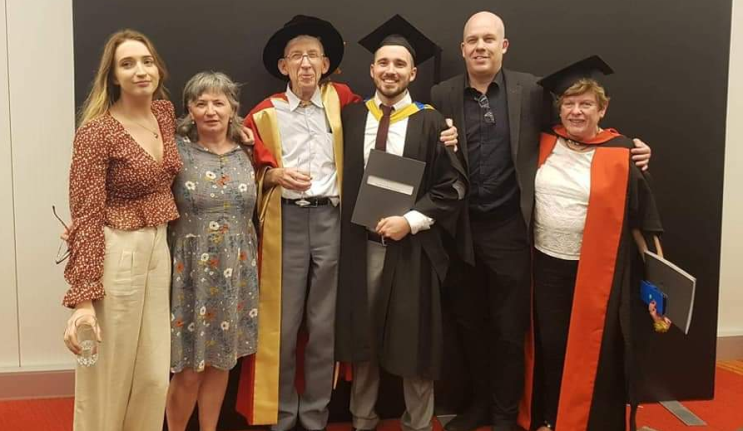
FEATURES
Macquarie Memories – In all probability…
Professor Murray Aitkin taught at Macquarie from 1969 to 1976 as a senior lecturer in statistics in Psychology and Economics. He recently attended his grandson’s graduation at Macquarie and was invited to join the academic procession. The emotions of the day stirred his memory and he relates an interesting anecdote about helping a student with a statistical dilemma.
I was teaching statistics in psychology at Macquarie University. A third-year psychology student had failed the University-wide Introductory Statistics course twice, and would be excluded from IS and courses depending on if he failed again. He had A’s in all his other courses. One of the Psychology staff suggested he talk to me.
I asked him what the problem was. He said, “If I knew what the problem was I would be able to deal with it. I go along OK for the first few weeks, and then Bang! – I’m lost, and I don’t know why.”
“OK”, I replied. “So go back to the classes and come to see me when you have this problem again.”
Three weeks into the semester he came again. “It’s just the same, as I thought! It’s no use – I might as well withdraw from the University!”
“So, what happened?” I asked. “How did the problem appear?” He said, “It’s in probability!”
“And?”
“When you say that the probability of throwing a 6 with a fair die is 1/6, what does that mean?”
I thought Wow! He’s a deep one. Most students accept this as obvious.
This was my answer. “In this course the lecturer doesn’t have time to give the background to this statement. What he could say is that the probability is based on a statistical model - it’s a mathematical approximation to a real-world uncertain event. In the early 1900s Weldon threw 12 dice about 26,000 times and observed that the frequency of the face number 6 was approximately 1/6, as for the other faces. This is the basis of the frequency theory of probability – that the probability of something should be based on the frequency with which it occurs in a large number of repetitions.
“This isn’t actually a useful definition because most events can’t be repeated in this way. That’s why coin tossing and dice throwing appear so much in introductory text books.
“But in fact the actual frequencies of the numbers 1-6 in Weldon’s throws weren’t the same. They departed slightly from equality, and that’s because the way dice are made doesn’t leave them perfectly symmetrical. The spots which are drilled out and painted leave the centre of gravity slightly out of the centre of the die, and so it slightly favours one side over the others.
“But we need a very large number of throws to discover this, and for most purposes we can assign equal probabilities to the six faces. So this is an approximation, but a very close one for all practical purposes.”
The student was satisfied with this, and had no further difficulty with the course – he finished with an A, and graduated with great distinction.
More than 25 years later, I was very surprised to get a letter from him. He was now in the UK working in neuroscience at a major laboratory, and had seen my name in some meeting notice. He wrote that at Macquarie he was having some problem with Introductory Statistics (he could not remember what it was) and asked me for help. I took him step by step through the problem he was having and cleared it up. He wanted to write to me to tell me how important this conversation we had was for his subsequent career development.
If you have an anecdote or story from the late 60s/early 70s please share it here, or email alumni@mq.edu.au.